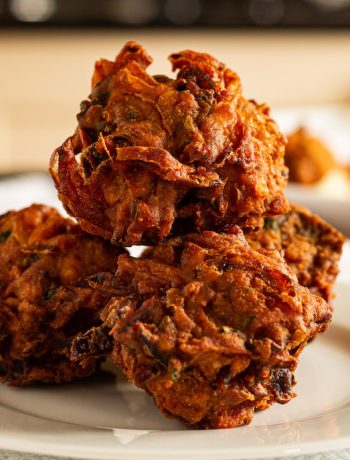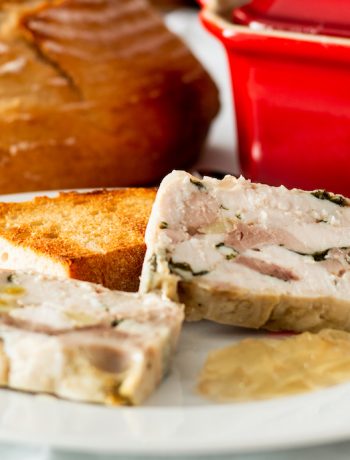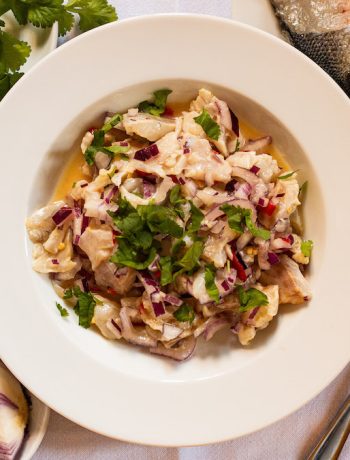Bisque dishes are not of lobster origin. Instead, bisques of old were highly spiced dishes of boiled game, possibly from the Spanish region of Vizcaina around the Bay of Biscay (Biscay becomes ‘bisque‘). Over time, game birds found there way in there, and eventually crayfish were added as a garnish, in much the same way as they appear quite cheekily in a Poulet Marengo.
Once the Earth had gone round the Sun another 200 or so times and we reached the 1600s, crayfish became the main ingredient, along with lobster, langoustines and other shellfish. At this point, we have our lobster bisque pretty much as it appears today. Notably, the flesh of the shellfish was not really used – the dish was a way of using up the shells and heads.
On the face of it, a traditional lobster or crayfish bisque is quite complicated to make, but broken down, it is a doddle. A mirepoix is cooked off in butter and the shells are added to that. This is flamed with brandy, and then reduced with white wine and fish stock. Separately, rice is cooked in more fish stock, and the whole shebang is then blended together before passing through a sieve to make a puree. The puree is heated with more fish stock, and then finished with cream and butter. Some decent seasoning is added, and that’s it.
Yes despite being relative simple, many ‘helpful’ cooks have tried to simplify it further, and nowhere is this more evident than in Boston. Reading around US recipes for lobster bisque you can find all sorts of added ingredients (tomatoes, paprika, mayonnaise), and cooks stating that the mirepoix should not be there, or the brandy is somehow awkward. The shells even get discarded in favour of expensive, versatile flesh. Suddenly, you have no idea how to make the dish.
When faced with this level of uncertainty, it is helpful to go look at some French chefs on YouTube, while keeping a firm eye a proper French reference book.
The version we have here is adapted slightly from Larousse, but even with this recipe, there are some things that are worth noting:
- The Larousse version results in a pinkish-orange soup that looks nothing like the deep red stuff in a Baxter’s can. This is because there is no tomato, saffron or paprika in it.
- You don’t really need to use full-size lobsters. We actually used the heads, claws, legs and shells from about 10 langoustines (Dublin Bay prawns), which are a type of lobster. If you use the tail flesh for something like scampi, this makes lobster bisque very inexpensive to make. In fact, the original was a means of using up shellfish that did not look good enough to go to market.
- The Larousse recipe uses the traditional method of applying a significant amount of processing to the shells. In days of old, this will have been done with a hammer and a mortar and pestle. These days, we can use a food processor. Some people use a jug blender for the job. We suggest caution. Modern kitchen equipment (particularly jug and immersion blenders) is perfectly capable of processing shells small enough to pass through a standard kitchen sieve. You must use a proper, fine chinois for this job.
- If you are just using shells and no flesh, then you can add some appropriate protein chunks in the form of whole, cooked king prawns, which further reduces cost.
Bisque de homard
Ingredients
- 10–15 uncooked langoustines (see notes)
- 50g butter
- 1 carrot diced into a mirepoix
- 1 stick of celery, cut into small dice
- 1 bouquet garni
- 1 onion, chopped
- 45ml brandy
- 100ml white wine
- 1.2L fish stock
- 75g short-grain rice
- Large pinch of Cayenne pepper
- 150ml creme fraiche
- Another 65g butter, cut into small pieces
- Salt and freshly ground black pepper
Instructions
Start by preparing the rice that will thicken the bisque. Bring the rice to a boil in 500ml of the fish stock, cover and turn the heat down very low. Cook for 15 mins, turn the heat off, and leave covered for another 15 mins. At the end of the cooking, the rice will be soft, and there will be no liquid left.
Meanwhile, fry the vegetables on medium in the 50g butter until softened. Season. Add the langoustines and cook for about 5–7 mins. If using lobster or crayfish, you are looking for them to turn pink.
Heat the brandy in a ladle, ignite it, and pour it over the shellfish and veg. Keep stirring the ingredients while the flames die back. Reduce a little but do not let it go dry. Add the white wine and reduce again to about a third volume. Add 150ml of the stock and cook gently for 10 mins. Pull out the langoustines and let them go cold.
Peel the langoustines, reserving the nice tail flesh. Put absolutely everything else in a metal tray and smash up the shells a bit. Put the shells, veg, cooking liquid and rice in a food processor and blend. Pass the blended mixture through a fine chinois into a clean pan, discarding any solids that will not go through.
Add the remaining stock to the puree and boil for 5 mins to thicken.
Allow the bisque to cool a bit before adding the creme fraiche and butter. Whisk smooth and season with Cayenne pepper to taste. Reheat to piping hot.
To serve, pour the bisque into bowls, and add the cooked tails. Garnish with a little parsley and a drizzle of creme fraiche.
Notes
The original recipe calls for crayfish or small lobsters, which need to be killed with a knife through the head, not boiled. Preparation is the same regardless. Reader and pro chef Robert Carrigan adds tomato paste and fresh thyme sprigs before the cognac.



 (4 votes, average: 4.75 out of 5)
(4 votes, average: 4.75 out of 5)


1 Comment
THE FORTUNE OF WAR — CHAPTER SIX | Press Gang
04/08/2023 at 11:41 pm[…] Bisque de homard […]